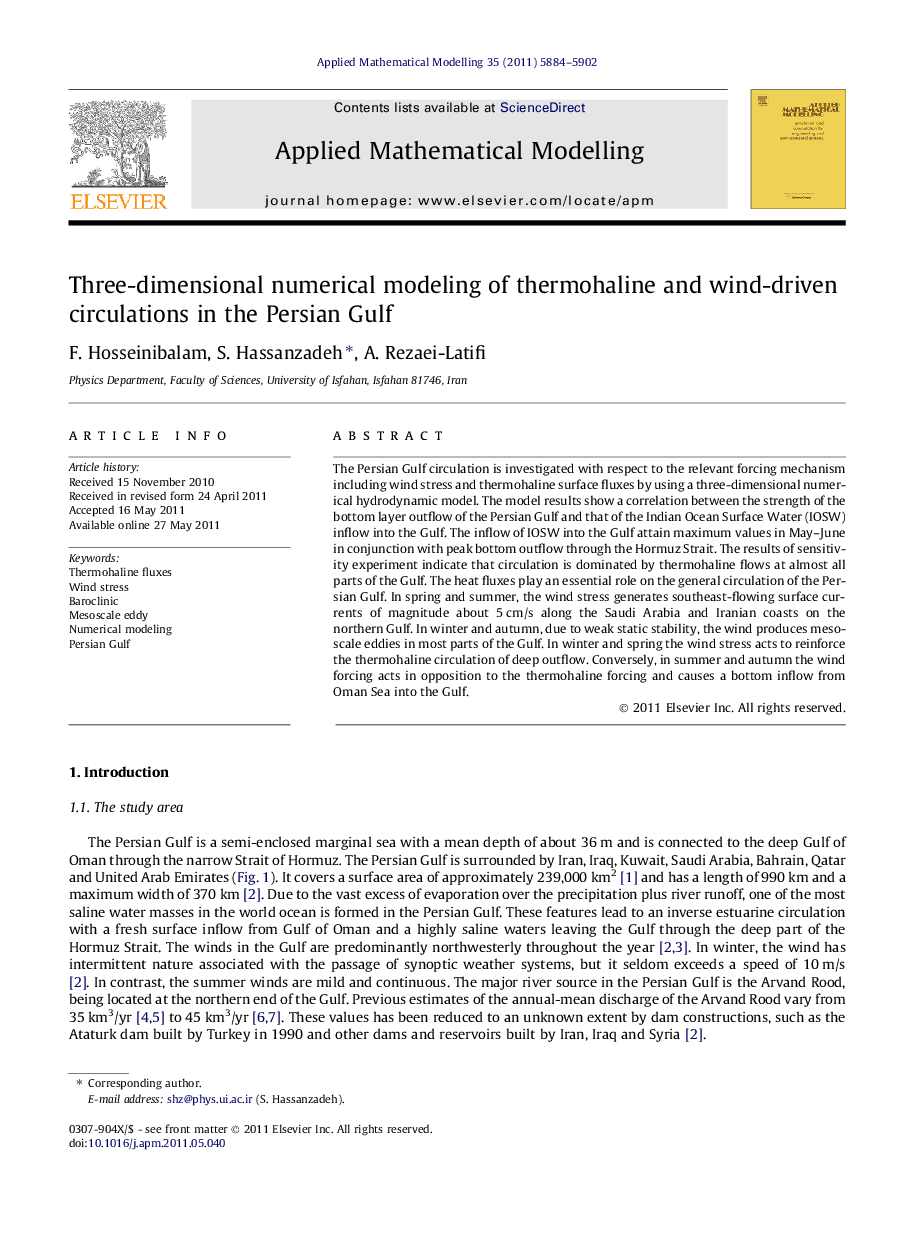| Article ID | Journal | Published Year | Pages | File Type |
|---|---|---|---|---|
| 1705702 | Applied Mathematical Modelling | 2011 | 19 Pages |
The Persian Gulf circulation is investigated with respect to the relevant forcing mechanism including wind stress and thermohaline surface fluxes by using a three-dimensional numerical hydrodynamic model. The model results show a correlation between the strength of the bottom layer outflow of the Persian Gulf and that of the Indian Ocean Surface Water (IOSW) inflow into the Gulf. The inflow of IOSW into the Gulf attain maximum values in May–June in conjunction with peak bottom outflow through the Hormuz Strait. The results of sensitivity experiment indicate that circulation is dominated by thermohaline flows at almost all parts of the Gulf. The heat fluxes play an essential role on the general circulation of the Persian Gulf. In spring and summer, the wind stress generates southeast-flowing surface currents of magnitude about 5 cm/s along the Saudi Arabia and Iranian coasts on the northern Gulf. In winter and autumn, due to weak static stability, the wind produces mesoscale eddies in most parts of the Gulf. In winter and spring the wind stress acts to reinforce the thermohaline circulation of deep outflow. Conversely, in summer and autumn the wind forcing acts in opposition to the thermohaline forcing and causes a bottom inflow from Oman Sea into the Gulf.
